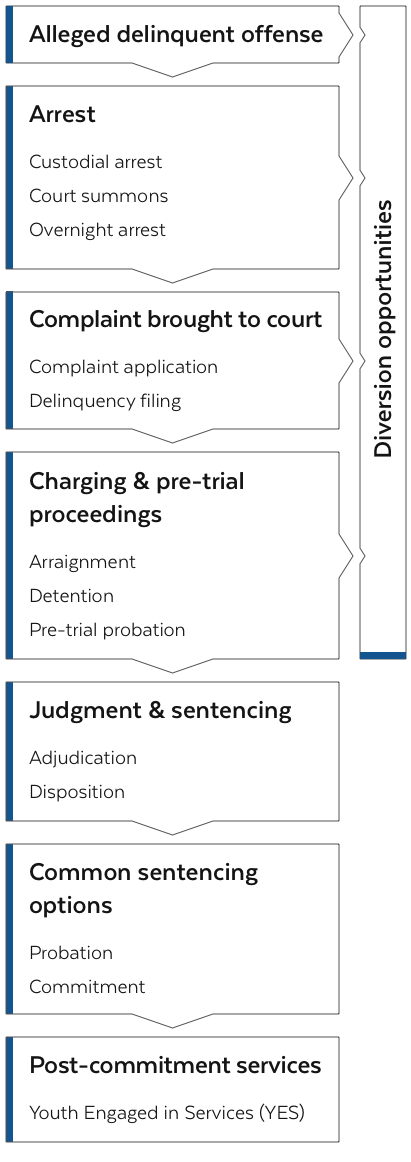Massachusetts Juvenile Justice Process
There are many steps in the juvenile justice process, starting from the point a law enforcement official becomes aware that a youth may have done something unlawful.
It’s worth noting, however, that many adolescents engage in risky behaviors and act without thinking sometimes. Testing boundaries and taking risks are a normal part of adolescent development. Most of the time, these behaviors do not result in any contact with law enforcement, and research shows that most youth eventually "age out" of delinquent behavior without any state intervention.
When the Massachusetts juvenile justice system does become involved following a youth's delinquent behavior, the following process may unfold:
Arrest: If a youth is suspected of committing a delinquent offense, they may be arrested and taken into custody by a police officer. A police officer can also give the youth a summons to appear at the Juvenile Court.
Complaint brought to court : In either case, an application for delinquent complaint is filed with a clerk magistrate in Juvenile Court. Clerk magistrates determine if there is probable cause to believe that the youth committed the alleged delinquent offense. If a clerk determines there is probable cause, they issue a delinquency filing.
Diversion: At any point before arraignment, a youth can be diverted from the traditional justice system. Police, clerk magistrates, district attorneys and judges all have the ability to divert youth to other programs and community-based interventions. Youth who are successfully diverted at this stage do not have a formal court record.
Charging: District attorneys receive delinquency filings and determine if they will bring the charges against the youth forward in court. At the Arraignment stage, the district attorney formally charges the youth with the alleged offenses. At this point, a youth enters their plea: "delinquent" (guilty) or "not delinquent" (not guilty).
Pre-trial proceedings: Following arraignment, a youth may or may not be held in detention before their trial. A youth may be held in detention without the opportunity for bail if the judge, following a hearing, determines they are too dangerous to be released to the community. A youth can also be detained, but with the opportunity for bail, if the judge determines the youth poses a flight risk (i.e. they will not return back to court for their trial).
Judgment and sentencing: After their trial, or after entering a plea of delinquent, a youth is adjudicated, meaning a judge determines whether a youth is "delinquent" (guilty) of the allegations against them, or not delinquent (not guilty). If a youth is adjudicated "not delinquent", their case ends.
Common sentencing options: If a youth is adjudicated delinquent, a judge will impose a disposition. Common dispositions (like "sentences" for adults) include being put on probation or being committed to the Department of Youth Services (DYS).
Post-commitment services: A youth who has been committed to the Department of Youth Services can, once their commitment is over, transition to the Department's "Youth Engaged in Services" (YES) program to receive services and support as they transition to young adulthood. Participation in this program is completely voluntary.
| Date published: | November 2, 2020 |
|---|---|
| Last updated: | November 2, 2020 |
